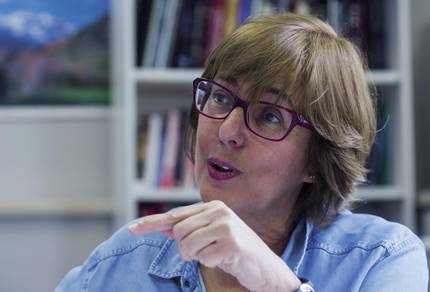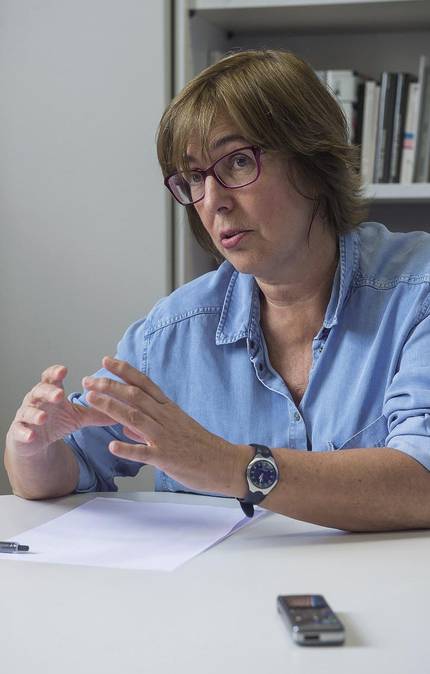“To combat false convictions, it is essential to foster scientific thought”

Yes, of course. We study the tendency to create cause-effect relationships. The trend is very strong, it is deeply rooted in all of us, and it is very useful to explain the why of the facts. For example, if we have suffered an accident, we want to know why to prevent it from happening again. Or if we got sick, the same thing, we want to know the origin of the disease to prevent it in the next.
In everyday life, therefore, we constantly create causal relationships and move forward on the basis of them. But this process also has its negative side: if we do not question these relationships or links, it may be that the wrong links are considered good, they are simply illusions.
We call these illusions causal illusions. Our research work focuses primarily on this. For example, if yesterday I had a bad body and took a pill to improve it, today it seems very normal to think that I have had that improvement thanks to the pill. But it doesn't have to be that way. Perhaps, even if I hadn't taken the pill, today I would be better than yesterday, because it is possible that it recovered by itself. However, we rarely realize it. Most, or at least many, will make this cause-effect relationship without realizing it may be wrong.
That is. We do not look at what happens if there is no supposed cause. In addition, there are factors that reinforce illusion. For example, it is shown that when the alleged cause and effect are consecutive, the risk of illusion is greater. That is, if after A happens B, it is possible that B is a consequence of A. Many times it will be true, but others will not.
The same happens when both, that is, the supposed cause and the desired effect, occur often. In fact, the frequency of the expected effect is the most exciting factor. That is, in the case of a disease that is cured it is often easier to develop illusion than with a disease that is not cured. The more frequent the expected effect, the easier the causal illusion turns out.
It is easier if the alleged cause is also frequent. In fact, if this alleged cause appears frequently, the likelihood of the alleged cause and expected effect occurring simultaneously or successively increases. This increases and strengthens the possibility of creating causal illusion.
Yes, but to ensure that it is so, we should look at what happens without cause, and we don't do that in everyday life. Therefore, it is easy to create a causal illusion, especially in the example above, when the alleged cause and expected effect are frequent.
Proof of this is homeopathy, in which homeopaths often recommend treatment, which facilitates the patient to benefit immediately after one of the periods of pill or drops consumption. And the patient will attribute improvement to treatment.
To this is added another factor, the absence of side effects. In general, alternative therapies have no direct side effects. Therefore, with them, in any case, you feel a benefit and not a detriment. The same benefit you would have without taking anything, since alternative therapies are characterized by not being better than placebo. What happens is that you have taken them and improved them. Therefore, it does not raise any suspicion, you have no reason to question the decision made, that is, homeopathy or go to such therapy.
Of course, that is so. Or in the case of parents who decide not to vaccinate their children. There is the greatest danger. But when this risk does not exist, we have seen in our experiments that when the subject who is performing the experiment has the possibility of administering a possible medication, regardless of whether or not it has effect, it will be more frequent if it has no side effects. And as it often seems, it increases the likelihood of it happening with recovery. And that same makes it happen more often, because the administration of medicine creates the illusion of the subject of healing it.
Yes, we experimented with college students on computers. However, some of the mechanisms mentioned above are already sufficiently demonstrated. We repeat them and make new contributions, but some are old and have been repeated internationally.
No matter where we are from, because our brain works the same here and there. According to culture, the theme of illusion can change. For example, in Hollywood, if the famous movie stars show that they haven't inserted their children, maybe there it expands, and here another wrong opinion will be more common than that. In any case, in depth, behind all there are the same reasons.
For example, among those demonstrated long ago is the importance of the frequency of the expected result. In spite of this, the first experiments in this regard are from the 1970s, and then it has been repeatedly demonstrated on many occasions and anywhere in the world, and we also come out in all experiments. The frequency of the alleged cause, the same, is later, but it is also a classic result.
To mention another, what we have seen is the case of people with depression, who are more likely to realize that they cannot control the effect, which does not depend on them. They are more skeptical. We have taken another step and, as we have seen, we believe that their explanation is behavior. In fact, the person suffering from depression is usually passive and does not cause. Therefore, it is easier to realize that, without doing anything, an effect can occur. On the contrary, an active person tends to cause the cause and then it is easier to converge with the effect, so it will be easier to get excited than with depression. Our contribution, therefore, is that both interpret the information in a different way, but with a different behavior, because they do not act in the same way.
Partly yes. Precisely, based on everything that experiments have taught us, we are designing prevention strategies. The truth is that many things have been tried and we also tried them, but everyone joins one thing that is fundamental to me: to promote scientific thought. That does not mean that we all have to be very rich in science, it is not that; it is thinking and acting on the basis of the scientific method. Be critical and question what is called until proven. Don’t settle for the message “because it works for me.”
However, it should be noted that sometimes erroneous strategies have been used, such as considering that it is not known with false convictions or guilt. Never do it. We must influence through education.
In this sense, we have a program with teenagers to form scientific thinking and have shown that the tendency to initial causal illusion is lost in part when they acquire scientific thinking. It is therefore effective. We are now studying how to work this with children. It is a very beautiful question and we believe that it is important to develop in the little ones that critical capacity to interpret the environment, which will always be useful to them.
Buletina
Bidali zure helbide elektronikoa eta jaso asteroko buletina zure sarrera-ontzian













